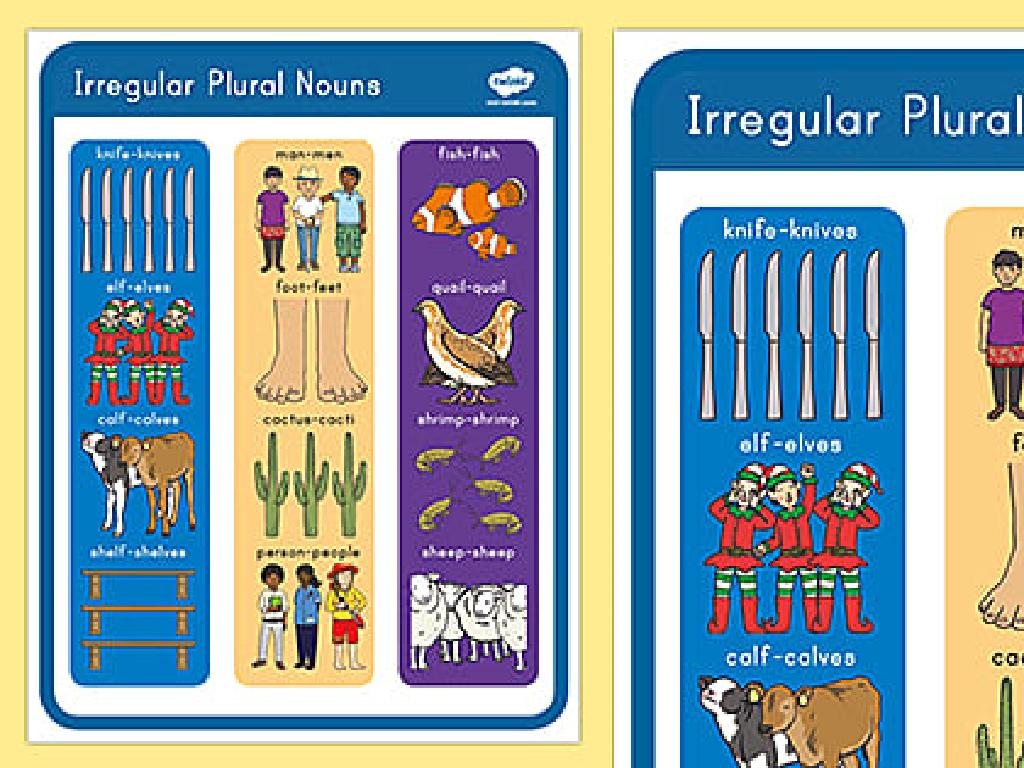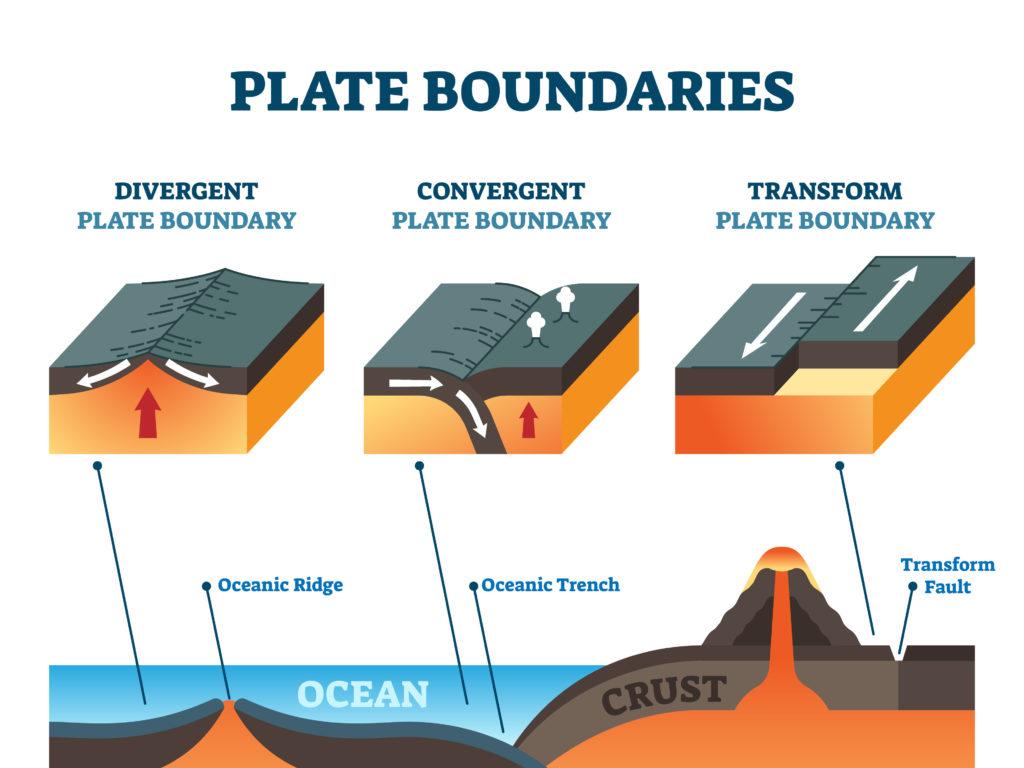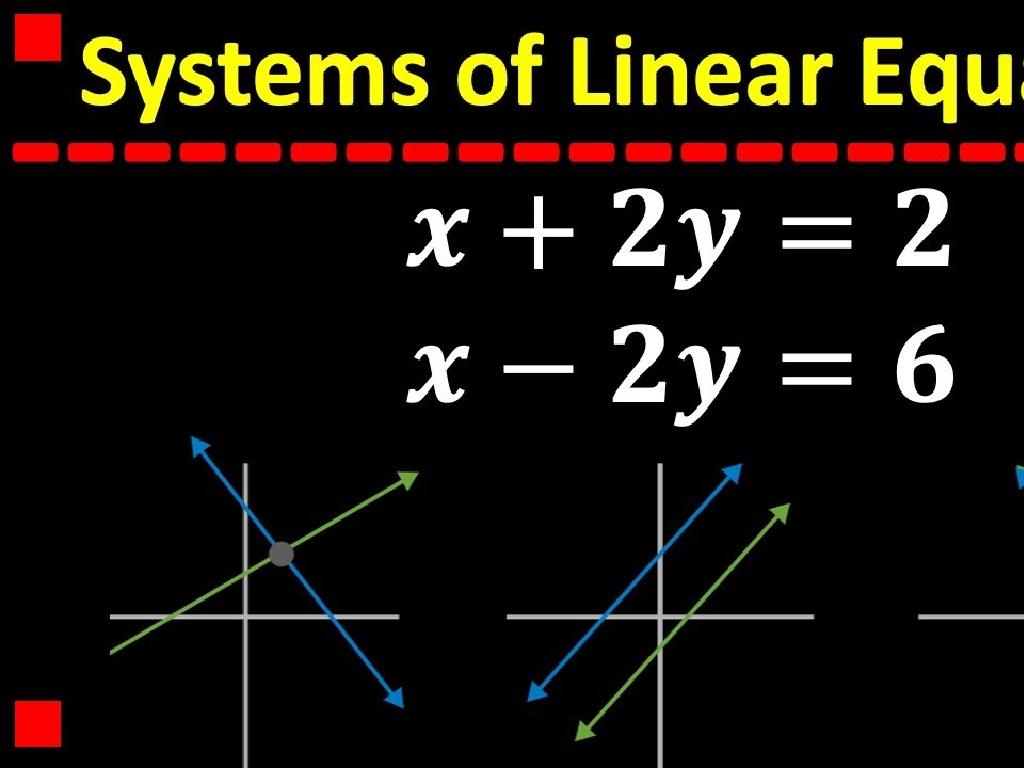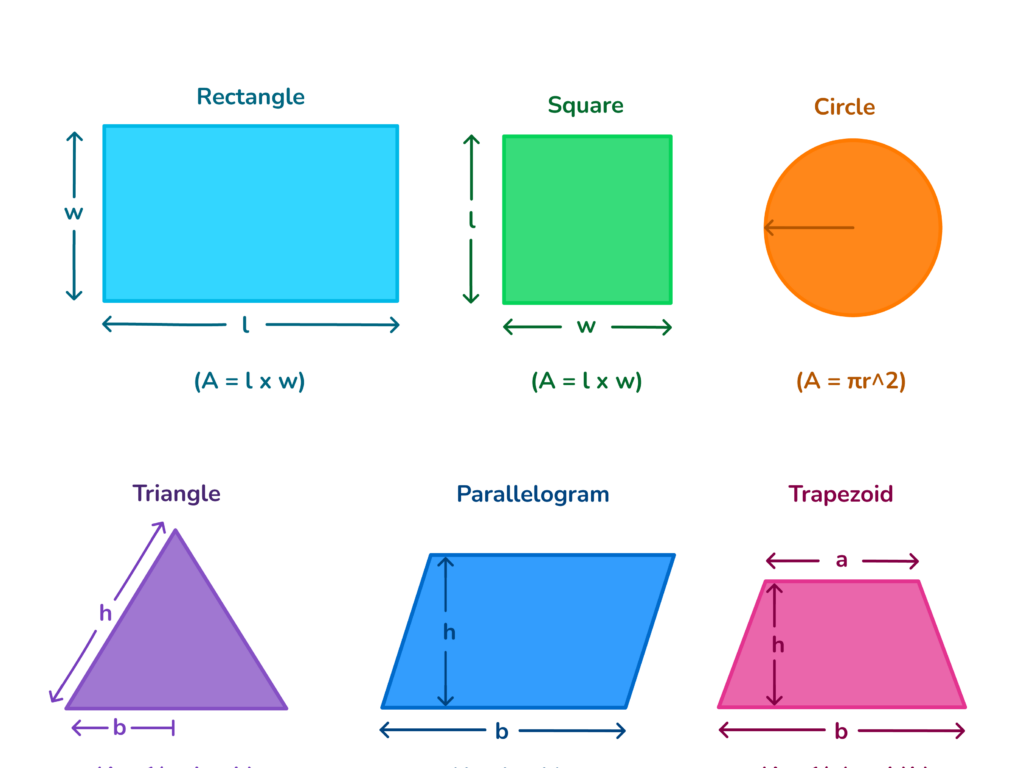Choose Units Of Time
Subject: Science
Grade: Third grade
Topic: Units And Measurement
Please LOG IN to download the presentation. Access is available to registered users only.
View More Content
Introduction to Time
– What is time?
– Units of time: from seconds to years
– Seconds, minutes, hours, days, weeks, months, years
– Time in our daily lives
– Scheduling activities, knowing when events happen
– Why time matters
|
This slide introduces the concept of time to third-grade students, emphasizing its role in everyday life. Begin by discussing what time is and why it’s a crucial part of our daily routines, such as going to school or having meals. Explain the different units of time, starting from the smallest (seconds) and going up to the largest (years), and how they relate to each other. Illustrate how we use time to schedule activities and anticipate events, helping students understand the practical applications of measuring time. Emphasize the importance of time in organizing our lives, making plans, and keeping track of important moments. Encourage students to share how they use time in their own lives, such as bedtime or playtime, to make the concept more relatable.
Seconds and Minutes: Measuring Time
– What is a second?
– A second is the basic unit of time.
– Counting with a stopwatch
– Use a stopwatch to count seconds.
– What is a minute?
– A minute is made up of 60 seconds.
– Stopwatch activity in class
– We’ll practice counting time together!
|
This slide introduces the basic units of time to the students. Begin by explaining that a second is the most fundamental unit of time, commonly used to measure short durations. Demonstrate counting seconds using a stopwatch and explain that 60 of these seconds make up a minute. For the class activity, distribute stopwatches or use a classroom clock with a second hand and have students practice counting seconds and minutes to get a practical understanding of the concept. Prepare different timed activities, like seeing how many times they can write their name in a minute or how long it takes to stack a certain number of blocks, to make the learning process interactive and fun.
Hours and Days: Measuring Time
– What defines an hour
– An hour is made up of 60 minutes.
– The length of a day
– A full day takes 24 hours to complete.
– Deciphering AM and PM
– AM is before noon, PM is after noon.
– Activity: Clock Reading Skills
– Practice telling time with a clock face.
|
This slide introduces the basic units of time such as hours and days. It’s crucial for students to understand that an hour consists of 60 minutes and a day is comprised of 24 hours. Clarify the concept of AM and PM, with AM representing the time before midday and PM denoting the time after midday. The activity involves reading time on an analog clock, which helps students apply their understanding of hours and minutes in a practical way. For the activity, provide various clock faces showing different times and ask students to read them aloud. Offer clocks with movable hands for hands-on practice. Encourage students to share how they use time measurement in their daily lives, like knowing school or TV time.
Understanding Weeks, Months, and Years
– A week is made of 7 days
– A month is roughly 4 weeks
– A year consists of 12 months
– Activity: Make your own calendar
– Use pictures and stickers for each month
|
This slide introduces the basic units of time: weeks, months, and years, which are essential for understanding calendars and the passage of time. A week is a cycle of seven days, commonly starting with Sunday and ending with Saturday. A month is a longer period, typically four weeks, though not all months have exactly four weeks due to varying lengths (28 to 31 days). A year is a collection of 12 months. For the activity, provide students with blank calendar templates and encourage them to mark important dates, such as birthdays or holidays, and decorate each month with drawings or stickers. This hands-on activity will help solidify their understanding of these time units. Offer guidance on how to count days, weeks, and months on a calendar, and discuss how different months have different numbers of days.
Exploring Units of Time
– Decades, Centuries, Millennia
– Decades: 10 years, Centuries: 100 years, Millennia: 1000 years
– Choosing the Right Time Unit
– Use hours for short events, days for longer ones, and so on
– Hours vs. Days: Usage Examples
– Hours for school, Days for a trip
– Activity: Time Unit Matching Game
|
This slide introduces students to the concept of longer and shorter units of time, such as decades, centuries, and millennia. It’s important to help students understand that the choice of time unit depends on the duration of the event being measured. For example, we use hours to describe the length of a school day and days for the duration of a weekend trip. The activity will involve matching different events with the most appropriate unit of time, which will help reinforce their understanding of when to use each unit. Possible activities could include matching birthdays with years, school days with hours, and historical events with decades or centuries.
Understanding Time in Science Experiments
– Importance of precise timing
Accurate timing helps in fair test results.
– Timing in experiments
For example, timing a plant’s growth or a race.
– Activity: Measure reaction time
Use a stopwatch to record how fast you catch a ruler.
– Discuss your results
|
This slide emphasizes the significance of using precise units of time when conducting scientific experiments. Accurate timing ensures that experiments can be replicated and that results are reliable. Provide examples such as measuring how long it takes for a plant to grow a certain amount or timing different stages of a race. The class activity involves students dropping a ruler and another student catching it to measure reaction time using a stopwatch. This simple experiment introduces the concept of reaction time and the need for precise measurement. After the activity, students should discuss their results and what they learned about timing in experiments. The teacher should prepare additional timing activities for students who finish early or need more practice.
Class Activity: Time Scavenger Hunt
– Find time-related objects or info
– Work together in scavenger teams
– Complete the hunt successfully
– Share discoveries with the class
|
This interactive class activity is designed to help students understand units of time through a fun and engaging scavenger hunt. Divide the class into small teams and provide them with a list of items or information to find that relate to different units of time (seconds, minutes, hours, days, weeks, months, years). Examples could include a stopwatch, a calendar, or a schedule. Encourage teamwork as they search for these items around the classroom or school. Once the scavenger hunt is complete, have each team present their findings to the class, discussing how each item relates to the concept of time. This will reinforce their understanding of time units and how they are used in everyday life. Possible variations of the activity could include finding historical events within certain time frames, estimating the duration of activities, or creating a timeline with the collected items.
Time Flies: Wrapping Up Units of Time
– Recap: Seconds to Years
– Remember, time units range from seconds to years.
– Importance of Time Units
– Knowing time helps us plan & understand history.
– Q&A Time!
– Ask any questions about time units.
– Review with Fun Facts
– Did you know a leap year has 366 days?
|
As we conclude, let’s review the units of time from seconds up to years, emphasizing how each unit fits into the larger picture of time measurement. Understanding different units of time is crucial for daily planning, historical knowledge, and scientific understanding. Encourage the students to ask questions to clear up any confusion they might have. Use this opportunity to reinforce learning with interesting facts, such as the concept of a leap year. This interactive session will help solidify their understanding and make the concept of time measurement more engaging.






